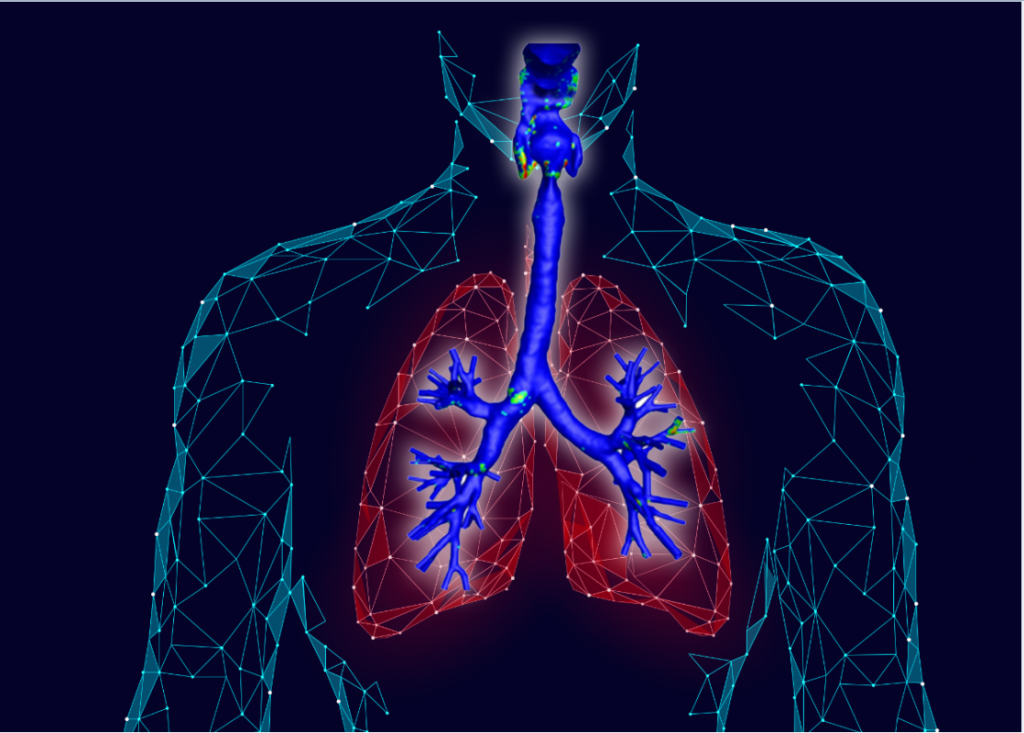Digital Twin for Airflow and Drug Delivery in Human Airways

CFD can be used to assess airflow and improve the efficiency of inhaled drug delivery in human lungs. However, presently this requires patient-specific simulations which can be both costly and time-consuming. The objective of the experiment is to reduce the time scales from weeks to almost real-time and the cost drastically by generating a Digital-twin of the human airway. Once obtained, the Digital-twin resulting from this experiment will be able to reproduce in real-time the airflow in any human airway and inspect the drug delivery process.
The proposed experiment consists of two steps: first, an extensive parametric study of human airways will be executed using advanced HPC to create a database of solutions via CFD. This extensive study will not use the conventional methodology of executing CT scans and cleaning them for CFD, but use a morphing tool based on Radial Basis Functions, to parameterize and adapt a single baseline geometry into new ones. Then, a vast amount of numerical simulations will be used to train the ROM and build the digital twin, allowing to predict flow and drug deposition on any lung geometry and visualize it without having to execute a CFD simulation. Such a tool will be able to provide patient-specific results in real-time and at affordable costs.
Organisations involved:
End User: One Simulations
ISV: RBF Morph
Application expert: TU Delft
Medical expert: Fondazione Toscana Gabriele Monasterio
HPC provider: GrepIT
